Whyte G-160 RS - Review
British brand Whyte Bikes has been one of the more progressive mountain bike companies and its latest G-160 is firmly pitched at aggressive trail riding and enduro racing with a geometry that is slacker, longer and lower than anything it has produced before.
The new G-160 here is an evolution of the old G150. Not only does it get more travel, up to 160mm from 150mm, but the geometry is bang up to date, bringing it in line with rival enduro race bikes. Whyte has also revamped the sizing: every bike is 20mm longer, meaning that last year’s large is this year’s medium. This modern thinking is the defining philosophy of the company, and it’s not just saving the good stuff for its enduro bike - even its short travel T130 and hardtails get similar treatment so that all mountain bikers can benefit.
This is a review of the 2016 G-160 RS. It comes equipped with a RockShox Pike RC 160mm fork, Monarch Debonair RT3 shock, SRAM X-1 gears and Guide R brakes, WTB Asym i29 tubeless rims with WTB tyres and a RockShox Reverb dropper post.
This is a review of the 2016 G-160 RS. It comes equipped with a RockShox Pike RC 160mm fork, Monarch Debonair RT3 shock, SRAM X-1 gears and Guide R brakes, WTB Asym i29 tubeless rims with WTB tyres and a RockShox Reverb dropper post.
Whyte G-160 RS Details:
• Intended use: trail / enduro
• Wheel size: 27.5"
• Head angle: 66°
• Hydroformed 6061 aluminium frame with Single Chain Ring design and tapered head tube
• Drivetrain: SRAM X-1 / Guide R brakes
• Fork: RockShox Pike RC 160mm
• Shock: Monarch Debonair RT3
• Wheels: WTB Asym i29 Rims with WTB Vigilante/Riddler tyres
• Weight: 13.5kg
• MSRP: $3,700 / £2,999
• Contact: WhyteUSA.bike / @whytebikes
• Intended use: trail / enduro
• Wheel size: 27.5"
• Head angle: 66°
• Hydroformed 6061 aluminium frame with Single Chain Ring design and tapered head tube
• Drivetrain: SRAM X-1 / Guide R brakes
• Fork: RockShox Pike RC 160mm
• Shock: Monarch Debonair RT3
• Wheels: WTB Asym i29 Rims with WTB Vigilante/Riddler tyres
• Weight: 13.5kg
• MSRP: $3,700 / £2,999
• Contact: WhyteUSA.bike / @whytebikes
Note: The 2017 range has just been announced and there are now three models priced from $3,199 for the G-160 S and rising to $5,999 for the top dog G-160 Works. The frame is the same for the new models, but the component spec has been changed significantly.
Frame Design
The frame looks the business, and while it may not be as sexy as some carbon superbikes, it’s purposeful and, as I’ve found, pretty much indestructible. Whyte constructs the frame from 6061 T6 aluminium - there is no carbon fibre version (unlike the shorter travel T130). The frame is packed with all the details you’d expect on a modern enduro bike; a tapered head tube, ISCG 05 chain guide mounts, internal cable routing and stealth dropper post. There are also some details unique to Whyte, such as the very tidy internal seat clamp with the top of the seat tube covered with a protective rubber seal - you can tell this is a British-designed bike, it’s been equipped to cope with typical sub-optimal British winter conditions.
The death of the front mech has been a long time coming, and with the widespread popularity of 1x drivetrains, thanks to SRAM's charge in recent years, Whyte has fully signed up to this future. The frame features Single Chain Ring (SCR) technology, which means it’s optimised for 1x drivetrains with a wider main pivot filling the space freed up by the removal of the front derailleur mount, and symmetrical chainstays which provide enhanced frame stiffness. For further stiffness improvements, Whyte has used a Boost 148x12mm rear end, which also provides an extra 3mm for the chain line and increased mud clearance. The fork is similarly boosted with 110mm spacing. Before you ask, no, the bike won’t accept plus- size tyres.
Other frame details include a conventional threaded bottom bracket, which is a big tick for easy servicing. Whyte is still opting to fit a pair of Crud Catcher bosses to the down tube, but I can't remember the last time I actually saw someone using a downtube mounted mudguard. The low-slung top tube provides plenty of standover clearance and the shock position does provide space for a water bottle cage, though space is limited; I found a side-entry cage worked okay with a small-size water bottle. So you can go full enduro and ditch your hydration pack with the G-160. Whyte has routed the rear gear cable and brake hose inside the frame and it has done a particularly neat job of it. The cables enter the side of the downtube with a rubber bung sealing the entry and exit ports to prevent the ingress of dirt and water.
Suspension Design
The Quad-4 suspension layout is a four-bar configuration with the main pivot located just behind the bottom bracket. The shock is mounted below the top tube and is pushed via a short rocker linkage, actuated by a pair of short links attached to the rear triangle. The bearing caps can be loaded up with grease to keep them running smooth through the grit and rain of a British winter. The bearings are also covered by a lifetime warranty, adding some nice peace of mind. This bike is fitted with a RockShox dampers, a Pike RC 160mm fork and Monarch Debonair RT3 shock.
Pinkbike sat down with Whyte Bikes designer Ian Alexander to find out a bit more about the new G-160.
 The G160 has changed a lot over the last model, is this direct feedback from the enduro racing scene?
The G160 has changed a lot over the last model, is this direct feedback from the enduro racing scene? I think it’s probably fair to say that there is a flood of feedback and input coming from Enduro racing coupled with the latest tracks that the race events are using. So what we are beginning to see of bikes aimed at Enduro, is a much more specific design brief to create out-and-out Enduro race bikes and moving away from a general purpose, long-travel trail bike. Despite some brands still launching those sort of bikes. I can’t help feel the long-travel trail bike has sort of been made redundant, particularly as short-travel trail bikes are proving to be better. We made a pretty early decision with the G-160 to move in a more Enduro-specific design direction, not least because backing it up we also had the Whyte T-130 in our line-up, which we were also re-developing for 2016. So with the T-130 set-up to be able to take the role of that general purpose trail bike, a 130mm bike with the geometry of our old 150mm bike, we could let the brakes off the longer-travel bike and really push the geometry and spec.
 What did the use of Boost axles allow you to do to the design of the bike that you couldn’t with regular axles?
What did the use of Boost axles allow you to do to the design of the bike that you couldn’t with regular axles? A stiffer wheel is predominantly the gain with it, but also moving the chain-line to 52mm pushes the chain-ring outboard by 3mm and gives us more room to push the chain-stays over a little further and gain more rear tyre clearance. From the perspective of a UK brand, more tyre clearance is always good. We like to future-proof where we can, and so Boost is where it will be going, especially as tyres (standard size as well as PLUS size) will only go wider from this point as well. The 3mm wider chain line also benefits our SCR system design, because without the front mech we can also push the main BB pivot even wider. 3mm may not sound much, but it’s incremental improvements and it is a knock-on consequence of adopting Boost.
 Could you fit 29er wheels or 27.5 Plus wheels?
Could you fit 29er wheels or 27.5 Plus wheels? Not in the G-160, no. Up until now I’ve never been a great believer in trying to make one frameset fit multiple set-ups. We’ve never done it since we came to the conclusion that you just end up compromising the bike so that it’s not actually any good in either set-up you’ve got it designed for. Geometry adjusts are a good example. We designed two systems in the past, one to adjust travel, and one to adjust geometry… they always ended up in slack settings and beyond that never got used once the rider had the bike set-up nicely. The marketing department absolutely loves geometry adjusts though and would have them on our bike tomorrow. Having said all that, clearly the 29”/27.5PLUS wheels size thing is going to be more interesting because a lot of people are trying to do it with one frame, but I think the compromises and consequences could possibly be too many and too far reaching for an all-out Enduro race bike, which is what we’re talking about here.
 Whyte has been one of the few brands to really embrace the super-long geo. Has this decision been based on customer feedback?
Whyte has been one of the few brands to really embrace the super-long geo. Has this decision been based on customer feedback? In a word, no. Sometimes you just have to go with your own research and development and believe in it. That’s to say we’re all following in Mondraker’s tyre tracks on the length concept initially, but in terms of the overall design package we followed our own direction with the G-160. The same goes for our SCR 1x specific frame… a pragmatist would probably want the enormous safety net of being able to revert to a 2x set-up and pretty much everyone in the industry has done that, especially those brands who have to service numerous international markets. But where are the gains in doing something like that? Same thing for really exploring the possibilities in geometry. Whyte is a UK-focused brand, and we decided to get it done and exploit the design opportunities to the full, and so far it seems to have worked well. It also helped to have a very early heads up on the future direction of the drivetrain suppliers, so expect it to keep making more and more sense.
 And how much longer could you go? Where is the limit?
And how much longer could you go? Where is the limit? Well, I don’t know is the honest answer. Quite a lot depends on the tracks and the courses that are going to evolve in Enduro racing. It’s no coincidence that we’re not far off DH bike geometry for the main reason the tracks that the top class Enduro courses are being ridden on are not far off DH tracks… Put it this way, I saw on a forum someone had asked (perhaps fatuously) why not just be done with it and do a 4metre wheelbase…? The answer to which is of course if there were no corners, we probably would be on 4m wheelbases. Look at dragsters… they don’t need to go around corners and guess what, their wheelbases are probably about 4m. The point being, that the shape of the bike and its inherent geometry is one of those forms follows function equations. Like any bicycle, road, gravel, mtb or trekking, its design is always a result of where the bike is going to be taken to and who it’s going to be ridden by.
Climbing
What really appeals is that the G-160 is ready to ride or race out of the box. The RockShox suspension is easy to dial in to suit your riding style and preference and the finishing kit is spot on, with a 40mm stem and 780mm handlebar a really good combination for this bike. Apart from the tyre choice, which will depend on your local terrain and conditions, there is nothing that needs changing on the bike. The WTB wheels and tyres are easy to make tubeless, the saddle is a comfortable shape and even the Whyte branded grips have a good feel, and durability through this long-term test has been excellent.
Sling a leg over and it's immediately apparent the G-160 is a long bike. The wheelbase is 1,211mm on the size medium (1,231mm on the large) which is longer than the Canyon Strive Race and YT Capra. That gifts the G-160 a crazy amount of stability and on most climbs the wheels simply glide over the rocks and roots, doing a good job of smoothing the trail. The G-160 comes in three sizes, with the medium having a reach of 479mm which provides a really roomy cockpit, while the 74.5-degree seat angle ensured I was never overstretched during climbs.
Where the length and slack head angle do inhibit progress (to a certain extent), is on very steep technical climbs, especially if you throw in lots of tight switchbacks. There’s so much bike in front of you that it sometimes becomes a bit unwieldy and you have to work a bit harder to keep the front wheel in check. Where the G-160 is more at home is on smoother- gradient fire roads: shuttling back to the top of the bike park between downhill runs is where the G-160 is in its element. It doesn’t like to be hurried, the geometry and weight prevent rapid cross-country progress. But climbing fast isn’t what this bike was designed for.
The rear suspension provides an impressive level of grip, though, and the rear tyre finds traction okay in the dry and moist conditions; throw a load of mud into the mix and it can struggle - I swapped to a HighRoller II, which improved traction and braking grip when trail conditions were slippery. The rear suspension has a linear stroke, but there's good support in the mid stroke from the RockShox damper, and you can flick the switch to firm it up for longer climbs. One change I would make is to swap the 32t chainring for a 28t, because even with the 11-42 cassette, I found I was over geared on some climbs and the weight of the bike is something you notice the longer the climb drags on.
Where the G-160 doesn’t shine as well is on mild traversing and rolling trails. It’s a lot of bike for all those linking stages and while it’s manoeuvrable at speed, at a lower pace it feels a bit lazy and uninterested. To be fair, the fast-rolling rear tyre helps inject a bit of speed at such moments, and the suspension is very well controlled, which helps you get out of the saddle and put in some power. It’s not really a bike for the trail rider that likes to rinse every single kilometre of the trail up and down, rather it is best to ride G-160 in the ‘winch up, pin it down’ style.
 | The changes to the new G-160 result in a bike that is an absolute rocket ship on fast, steep and challenging trails. And it's coming down the hill or mountain that the bike really comes to life. It's a monster. |
Descending
The changes to the new G-160 result in a bike that is an absolute rocket ship on fast, steep and challenging trails. And it’s coming down the hill or mountain that the bike really comes to life. It’s a monster. It's so much fun. It may be an adequate climber, but it’s electric on the descents. The steeper the gradient, the happier the bike, with the long wheelbase and slack head angle really working to your benefit to help you extract as much speed and pace out of the trail as you dare. The sizing is spot-on for me. Maybe if I was living in the Alps the extra length of the size large might be welcome, but for local trails, the medium was perfect. I blitzed PBs on my local descents, trails I know like the back of my hand.
Where the geometry and suspension really come together to form a formidable package is racing trails blind. I took the Whyte out to France to take part in a 3-day enduro where it proved to be right at home, when riding unfamiliar trails of varying difficulty, the G-160 just gives you so much confidence that even if you do go into a section way too hot, you’ve got the stability and balance to get yourself out without any scrapes. It gathers pace rapidly and you can find yourself hooning along at insane speeds. I'd definitely upgrade the front 180mm rotor to a 200mm to provide more stopping power if riding regularly in the mountains.
The Whyte is a well-proportioned bike with a shape that just feels right. While at low speed it’s a bit of a truck, at high speed it’s impressively maneuverable and the 66-degree head angle, short stem and wide bars put you in a very commanding position to wrestle it down the hill and through the turns with all the rapidity you can wish for. The suspension tune is pretty good out of the box, but the Monarch and Pike are easy to adjust for rider style and weight, with a couple of tokens improving the front-end setup. There’s not a downhill trail that the G-160 doesn’t revel in. Rocky chutes, flat-out, fast and smooth tracks, berms, tricky rooty singletrack through the trees, jumps, steep drops. It laps it all up. It’s not quite as agile and nimble through slower speed trails as some other enduro bikes, but get it onto any steep and let go of the brakes, and it just rips down the trail.
I long-term tested the bike over the summer, using it everywhere from my local singletrack to trips to the bike park and competing in a 3-day enduro in the French Alps. Through it all, the G-160 shone. It never put a foot wrong, and the solidly-built kit provided stunning dependability. It’s a lot of bike and for some people and trails it’ll probably be too much bike, but if you’ve got the right terrain and attitude, the G-160 delivers a phenomenal performance.
Component Check
• SRAM X1: Reliable and solid shifting performance even in the grittiest conditions, and the direct-mount chainring kept the chain on track even with the lack of a chain guide in the French Alps enduro race. Matchmaker clamps keep the handlebars clutter free
• SRAM Guide R brakes: The brakes served up tonnes of well-modulated power, but I’d like to see a 200mm disc rotor up front to deal with the high speeds the G-160 is very capable of.
• RockShox Reverb dropper post: No complaints with the performance of the dropper post, but given the low top tube and short seat tube, I’d like to see a longer drop post than the 125mm this one offers
• RockShox Pike and Monarch Plus: These dampers are a really good match for the bike. The rear shock tune suits the characteristics of the Quad-4 suspension setup, with a smooth and progressive tune that provides good small bump sensitivity, plenty of support in the mid stroke and ample big-impact capability. A couple of tokens improved the Pike's performance.
• WTB tyres The Vigilante is an aggressively-treaded tyre that works well in a range of conditions from dry to loose and even copes with mud pretty well. The Riddler is a fast-rolling tyre in the dry and copes in loose rocky conditions, but it’s not really at home in the mud.
Pinkbike's Take:
 | The Whyte G-160 is a formidable enduro bike, offering exceptional value for money. - David Arthur |
Thanks to 417 Project for letting us use its awesome trails to test and photograph the bike.
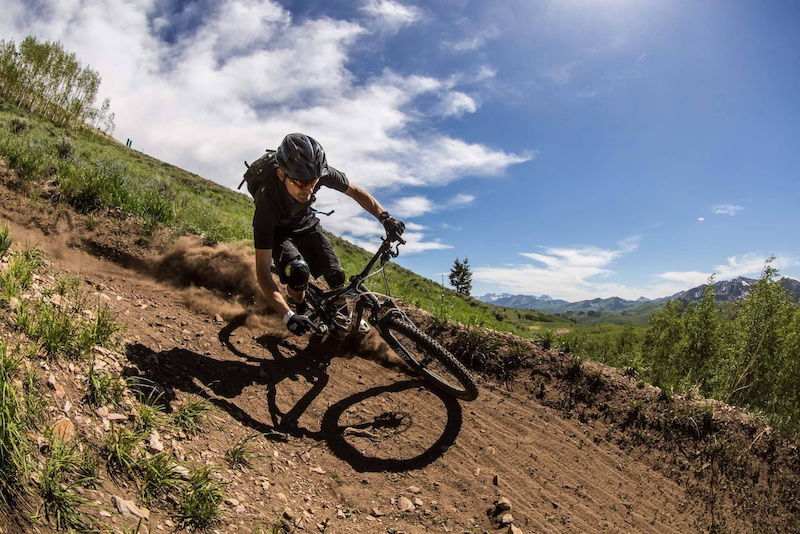
About the Reviewer David Arthur is a freelance mountain biker writer based in the UK. Stats: Age: 34 • Height: 5'11:” • Weight: 154lb • Industry affiliations / sponsors: None
Author Info:
Must Read This Week
Sign Up for the Pinkbike Newsletter - All the Biggest, Most Interesting Stories in your Inbox
PB Newsletter Signup
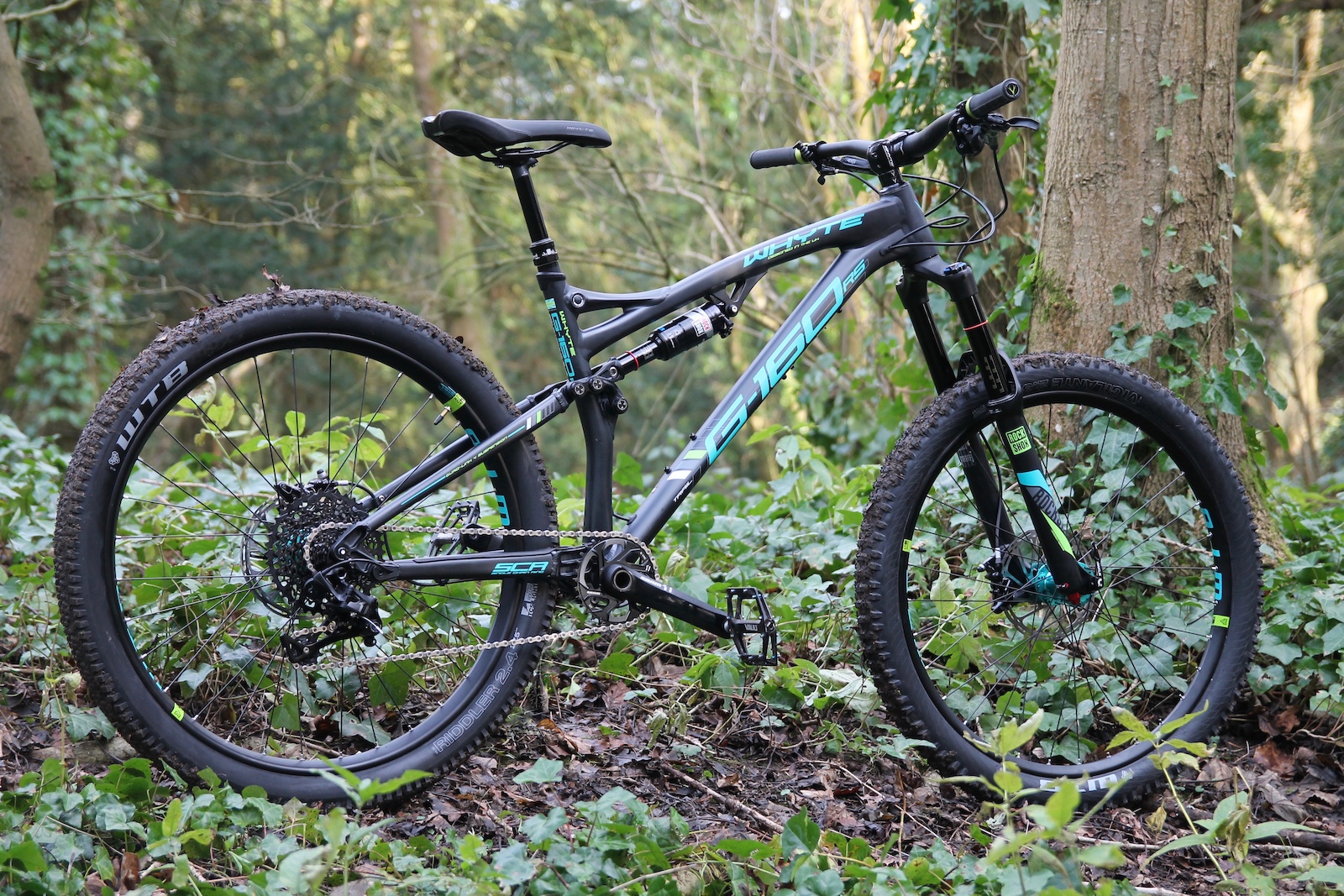

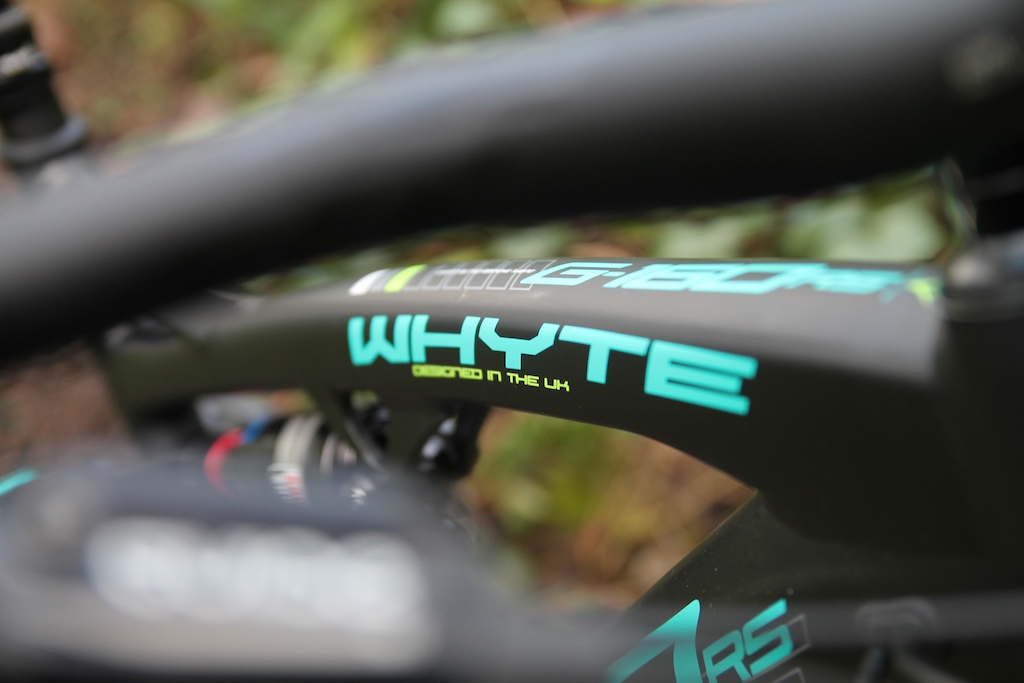

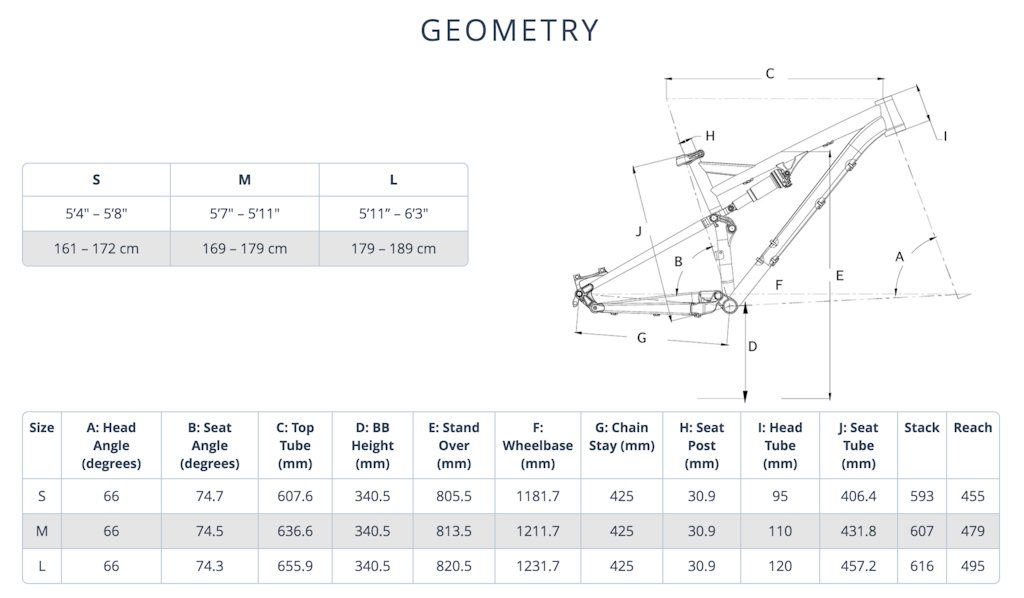




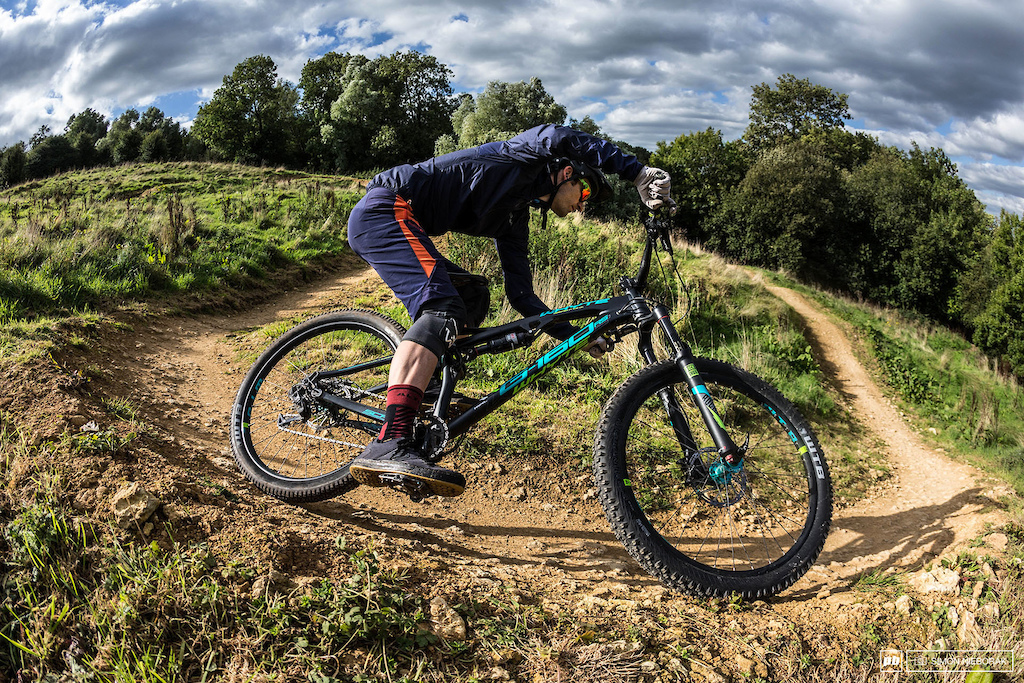


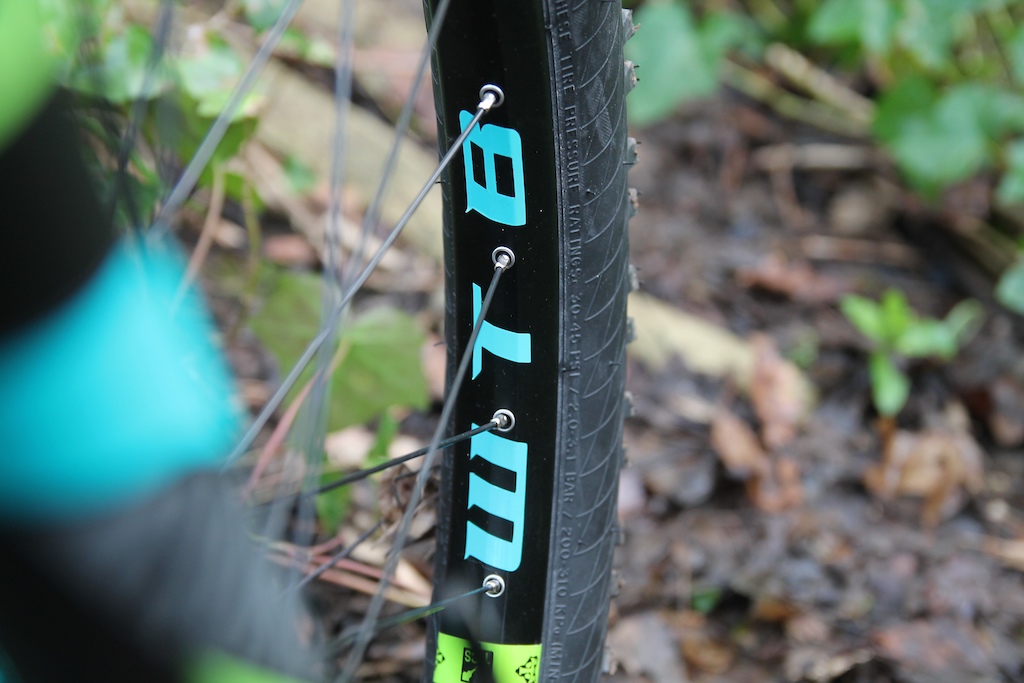

 Member since Apr 12, 2015
Member since Apr 12, 2015
And constantly chasing a bike to get the best out of it is tiring.
Still an exceptional bike though but I would say if you were after an every day trail bike that you could do a few enduros on then the T-130 is probably a better fit for that role.
If you want to do more than a few enduros and your usual riding is cruising and pushing up hills whilst bombing down the hills at 100% everytime then this is an amazing bike.
I just feel people need to be more honest with themselves when buying bikes like this as they will have more fun and get more use out of something more appropriate a lot of the time
I am quite lucky, I think, in that I can ride most bikes and get comfortable quickly. I find the transition between 27.5 and 29ers instantly and do not seem to feel the wheel size difference in any negative way. But I really like to throw my weight around on a bike so I suppose it negates some of the so called short failings.
Overall though you need to adapt to a bike to get the best out of it. It took me a while to get my head around the 901 when I first got it but now we get on well. And I like to hit up every demo day I can so am constantly trying out new things in a variety of situations. I have to admit I have a soft spot for the Canondale Beat of the East but don't tell anyone
Put me in the camp of 'I want this bike' hahaha
I imagine a lot of people will get the 160 to work well for them and their riding but I found it very much more a racer than an every day ride and that is what it is designed for.
I spoke more for the rider like me, that wants something you know can be raced at top level, just in case you need it, when in truth it is going to make life much harder for me for most of my riding.
I think, what I am saying, in a long winded, drunken drawn out way is it's horses for courses
This new bike will win trail bike of the year and win accolades for being more useable more of the time. It won't climb like an XC bike and descend like a DH bike it will ride like a trail bike. And that bike will make more sense to more riders.
I have to say though personally I like long and slack bikes as it suits my riding style but I understand that what works for me will be far from perfect for everyone else
When I'm riding with a mate who's happily blitzing the same trails on his 100mm 26" steel single speed hardtail though, you do have to wonder whether even 130mm full-sus leaves a lot of people riding more bike than they actually need.
I had to sell it to fund a T-130 CRS purchase. I do a lot of endurance rides and needed something I could pedal for 50-80 miles every week. The T-130 is that "single quiver" bike. Maybe not the best at any one thing, but good-to-great at everything.
Maybe one day I'll try a T-129. I've heard they just fly.
Anybody out riding in the Seattle area today is getting mud in every crevasse.
However, I think for most uk Enduro could courses it's a bit overkill as they often have a lot of tight and slow stages where a shorter bike is better. My Canyon is fairly long and it the geometry benefits are only felt once you get up to a decent speed.
What do people think of the idea of getting a T130 and sticking a 150mm or even 160mm pike on it?
Interesting to read about the tweeks @mattwragg would make, as most of them are included in the list of spec changes on the 2017 model - Eagle gears for better climb versus top speed ratio, better brakes with bigger rotors, Lyrik rct3 fork and Monarch Plus rc3 shock, and lighter carbon wheels to make climbing more tolerable. Currently running at 29lbs on mine which for a bike of this travel and ability is pretty damn light in my book!!! Anyone who thinks this isn't a bike for every situation and every trail needs to try one for themselves. This is my third Whyte bike and they just keep getting it right time and time again, and it's good to see them getting such positive reviews over the pond as they've almost been the UKs dirty little secret for too long!!!!
Enjoy your first ride, I have a feeling you're gonna like it
That said I do fancy having another go at the whole 'proper Enduro' bike thing and something that will still feel good doing trail centre stuff but able to mix in some uplift days.
Great bike.
This is hugely expensive when you have 2 German brands online that can be had for 1k less with consistent 5* reviews !
I'm not riding every weekend so why put extra 1k into a bike, when cheaper superior bikes are available ??
I also think it is a little disrespectful to say that anyone riding this bike is no more than a weekend backwoods hacker or a broduro warrior. I class it in the same bracket as calling all Santa Cruz or Yeti owners over-paid dentists......drop the hate my man and learn to appreciate that some people want to ride a different bike to you and in a different style.
If you don't actually race enduro, that's not a problem....hence the back woods comment. I think you've taken it personally, so apologies. I don't call anyone riding an SC or Yeti anything apart from lucky. No hate, just amazed that they are pushing such a big travel bike as an enduro bike.
Sorry, not looking forward to work today and had to moan.
www.pinkbike.com/photo/8956584
And how about 'low, long and slack'?
Details are ugly IMO. Pivots look rank as does the post crushing seat post clamp. Dropper hose straight out of the DT and into the ST? Afterthought.
lensmakersoptical.com